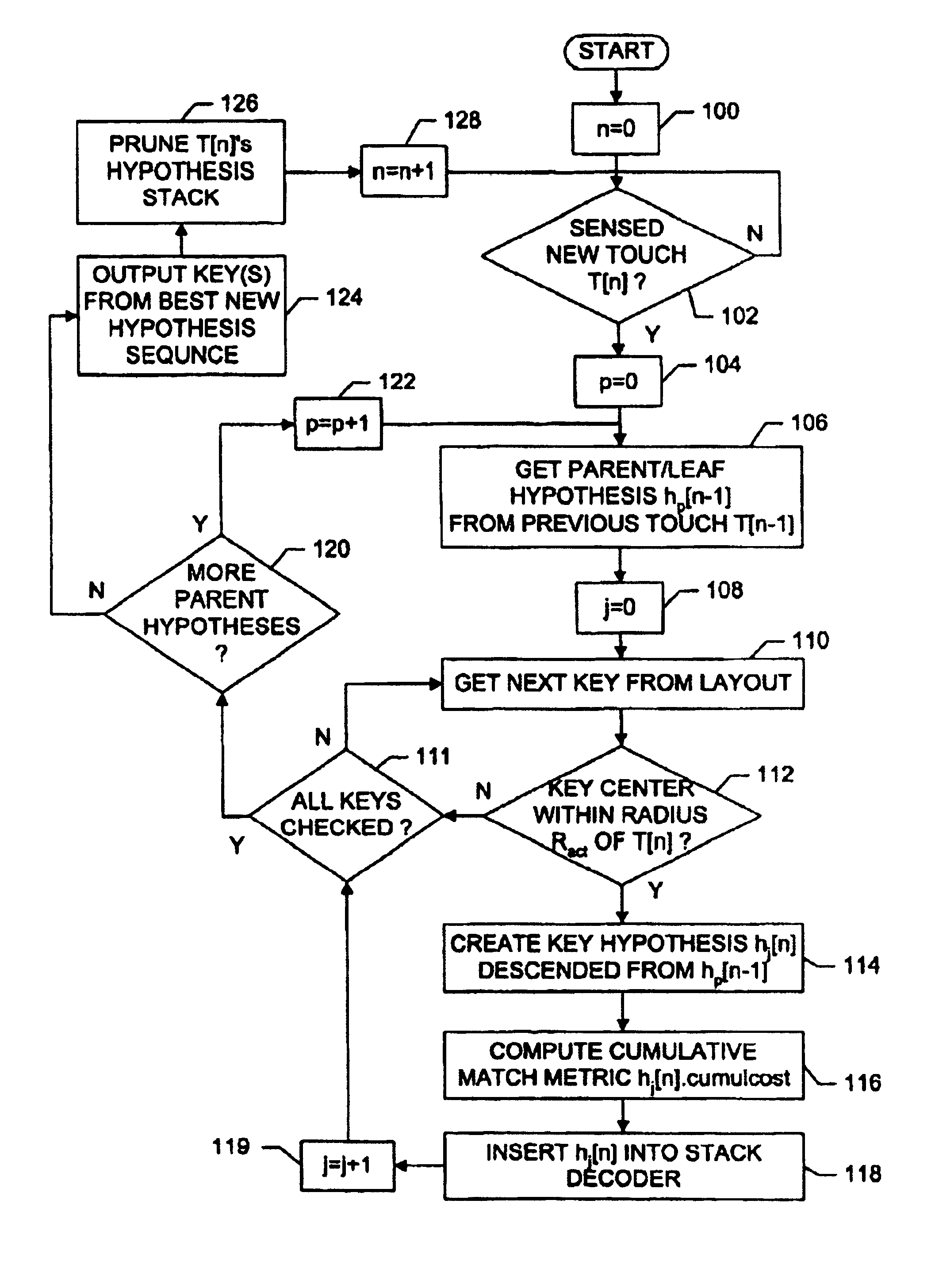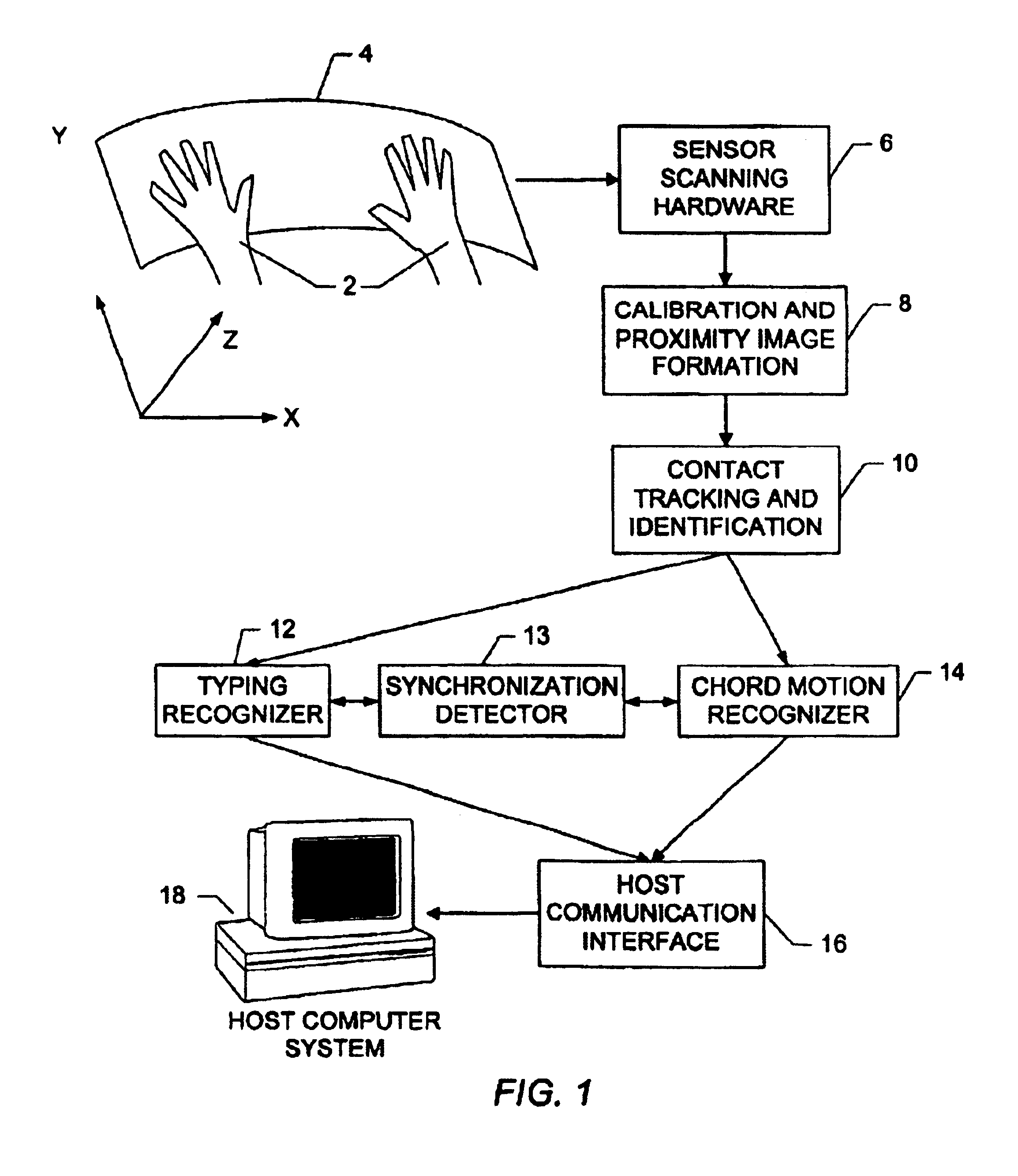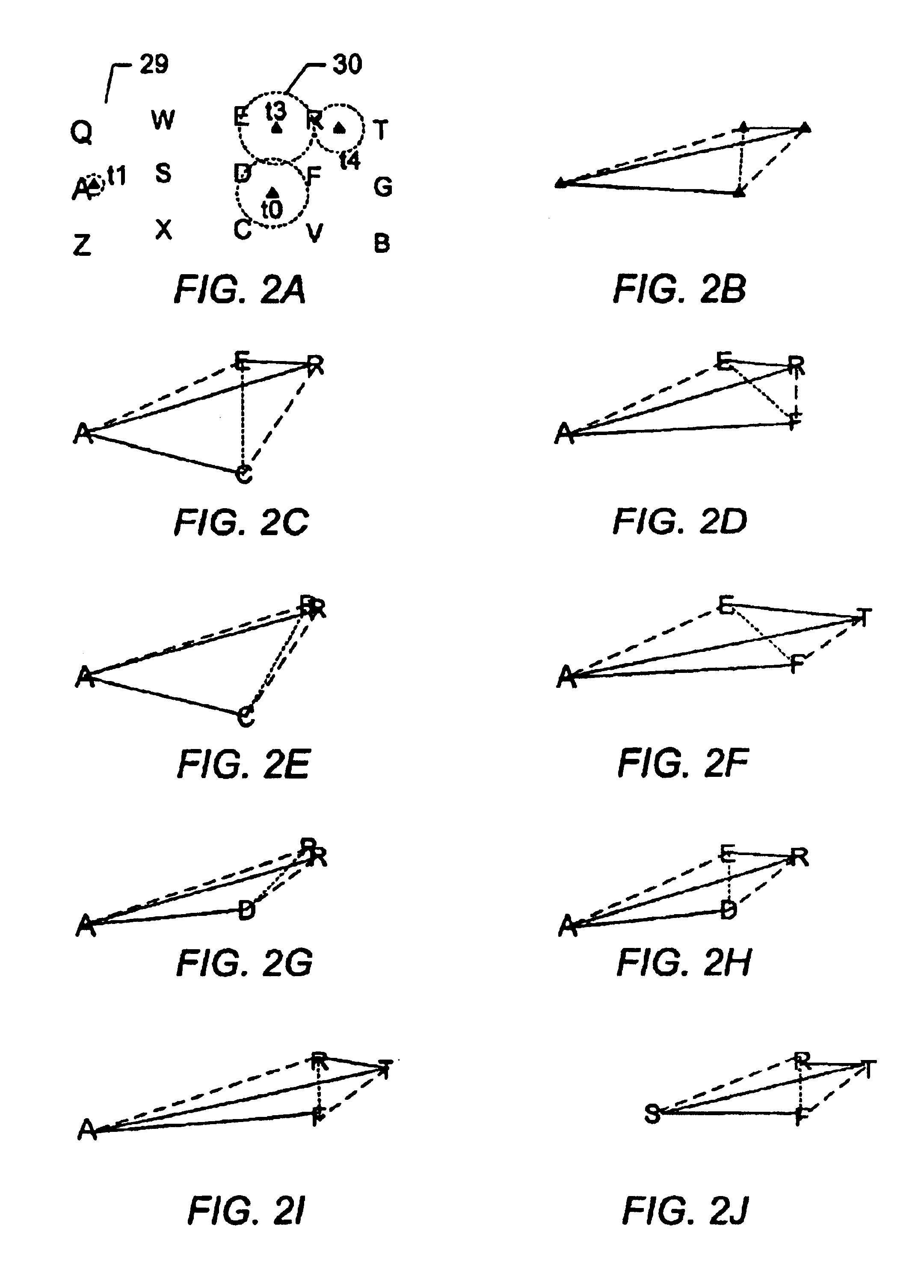System and method for recognizing touch typing under limited tactile feedback conditions
a type recognition and tactile feedback technology, applied in the field of type recognition systems and methods, can solve the problems of inability to accurately report the position of the finger on the touchscreen when touched by more than one finger, the impracticality of touch typing on such devices, and the lack of tactile feedback
- Summary
- Abstract
- Description
- Claims
- Application Information
AI Technical Summary
Benefits of technology
Problems solved by technology
Method used
Image
Examples
Embodiment Construction
[0027]In the preferred embodiment, the typing recognition methods of this invention are utilized within a multi-touch system like that shown in FIG. 1. The sensor scanning hardware 6 detects touches by fingers 2 on the surface 4. The proximity image formation 8 and contact tracking 10 modules determine the touch timing and surface coordinates and report these to the typing recognizer 12. The typing recognizer decides which keys the user intended to press and tells the host communications interface 16 to send those keys to the host computer 18. The system may also include a chord motion recognizer module 14 that interprets lateral sliding of multiple fingers as pointing or gesture input and effectively disables the typing recognizer for such touches. The synchronization detector 13 searches for simultaneous presses or releases of multiple fingers, thereby aiding in detection of chord slides, chord taps, and resting hands. All modules besides the typing recognizer are fully described ...
PUM
 Login to View More
Login to View More Abstract
Description
Claims
Application Information
 Login to View More
Login to View More - R&D Engineer
- R&D Manager
- IP Professional
- Industry Leading Data Capabilities
- Powerful AI technology
- Patent DNA Extraction
Browse by: Latest US Patents, China's latest patents, Technical Efficacy Thesaurus, Application Domain, Technology Topic, Popular Technical Reports.
© 2024 PatSnap. All rights reserved.Legal|Privacy policy|Modern Slavery Act Transparency Statement|Sitemap|About US| Contact US: help@patsnap.com










